Exam Details
Exam Code
:JN0-692Exam Name
:Service Provider Routing and Switching Support, ProfessionalCertification
:JNCIAVendor
:JuniperTotal Questions
:171 Q&AsLast Updated
:Apr 09, 2025
Juniper JNCIA JN0-692 Questions & Answers
-
Question 101:
What are three Junos automation scripts? (Choose three.)
A. op scripts
B. pulse scripts
C. commit scripts
D. event scripts
E. action scripts
-
Question 102:
Click the Exhibit button.
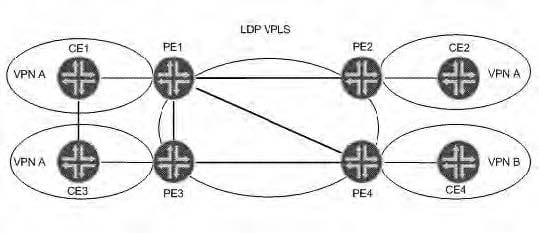
Your IT manager asks you to describe a benefit of migrating from LDP VPLS towards BGP VPLS considering the operational network shown in the exhibit. What can you tell your manager?
A. Using BGP signaling improves scaling, because a full mesh of transport LSPs is not needed.
B. MAC addresses are learned through BGP instead of LDP, which improves scaling.
C. Ingress PE replication can be reduced, because BGP VPLS supports P2MP LSPs.
D. Configuration overhead is reduced when adding new sites or new VPNs.
-
Question 103:
Click the Exhibit button.
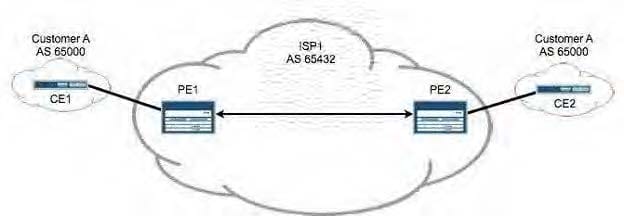
In the exhibit, your Layer 3 VPN uses BGP to send and receive routes from customers. Customer A reports that remote routes are not being received on CE2.Which configuration parameter is missing from your PE router configuration?
A. vrf-import
B. vrf-export
C. as-override
D. advertise-peer-as
-
Question 104:
Click the Exhibit button.
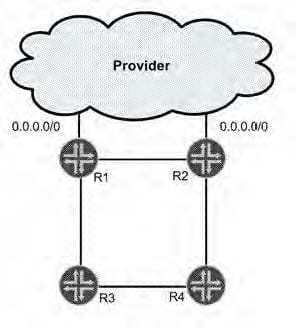
In the exhibit, R1 and R2 have a static default route configured that points toward the provider. Both routers redistribute the default route into OSPF. R2 is the preferred gateway to reach the provider. R1 is the backup gateway. All link metrics are equal. Which two steps ensure that traffic to the provider flows through R2 while the network is working properly? (Choose two.)
A. Redistribute the default route as a Type 1 external route on router R1 and a Type 2 external route on router R2.
B. Redistribute the default route as a Type 2 external route on router R1 and a Type 1 external route on router R2.
C. Modify the preference value of the default route on router R1 so that it is less preferred than OSPF external routes.
D. Modify the preference value of the default route on router R2 so that it is more preferred than OSPF external routes.
-
Question 105:
Click the Exhibit button.
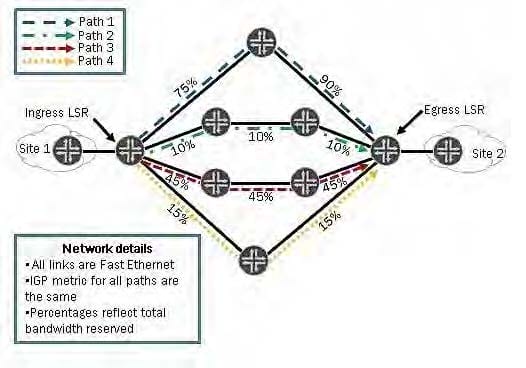
You have an MPLS network and you have configured most-fill as a CSPF tiebreaker. Using the information in the exhibit, which path will be used to signal a new LSP requiring 12 Mbps?
A. Path 1
B. Path 2
C. Path 3
D. Path 4
-
Question 106:
Which two configuration parameters are required to configure a BGP-signaled VPLS service? (Choose two.)
A. vpls-id
B. site-identifier
C. route-distinguisher
D. site-address
-
Question 107:
Click the Exhibit button.

Referring to the exhibit, which statement is correct?
A. Only multicasts packets (224.0.1.39) are allowed on the input and output direction.
B. Auto-RP discovery messages are filtered in the input and output direction.
C. Rendezvous point announcements are filtered in the output direction.
D. This filter does not work because the input or output parameter is missing.
-
Question 108:
Click the Exhibit button.
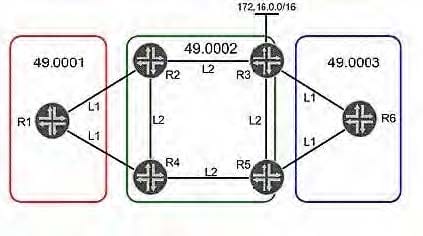
The IGP is IS-IS. Routes from R1 need to be present on R6. Referring to the exhibit, what will accomplish this task?
A. Create an L1 adjacency between R2 and R3 to allow the routes to pass through to R6.
B. Use policy on R3 to leak R1's routes from L2 to L1.
C. Change the area address from 49.0003 to 49.0001 on R6 to allow R6 to accept routes from R1.
D. Use policy on R2 to leak R1's routes from L1 to L2.
-
Question 109:
What is the purpose of the no-cspf command?
A. to successfully signal the LSP across the network regardless of constraints
B. to delete the CSPF database
C. to ignore OSPF when calculating the ERO
D. to successfully signal the LSP only if the default IGP path (or named path) meets all constraints
-
Question 110:
An OSPF network has been designed with multiple areas to improve scalability. Which two statements are true? (Choose two.)
A. Each router in the OSPF network runs the shortest-path-first algorithm to determine paths through the network.
B. The Area Border Router for each area runs the shortest-path-first algorithm and floods its results through the area.
C. Each area must have at least one link connecting it to each of the other areas of the OSPF network.
D. OSPF provides loop-free routing within an OSPF routing domain, but does not guarantee symmetrical routing.
Related Exams:
Tips on How to Prepare for the Exams
Nowadays, the certification exams become more and more important and required by more and more enterprises when applying for a job. But how to prepare for the exam effectively? How to prepare for the exam in a short time with less efforts? How to get a ideal result and how to find the most reliable resources? Here on Vcedump.com, you will find all the answers. Vcedump.com provide not only Juniper exam questions, answers and explanations but also complete assistance on your exam preparation and certification application. If you are confused on your JN0-692 exam preparations and Juniper certification application, do not hesitate to visit our Vcedump.com to find your solutions here.